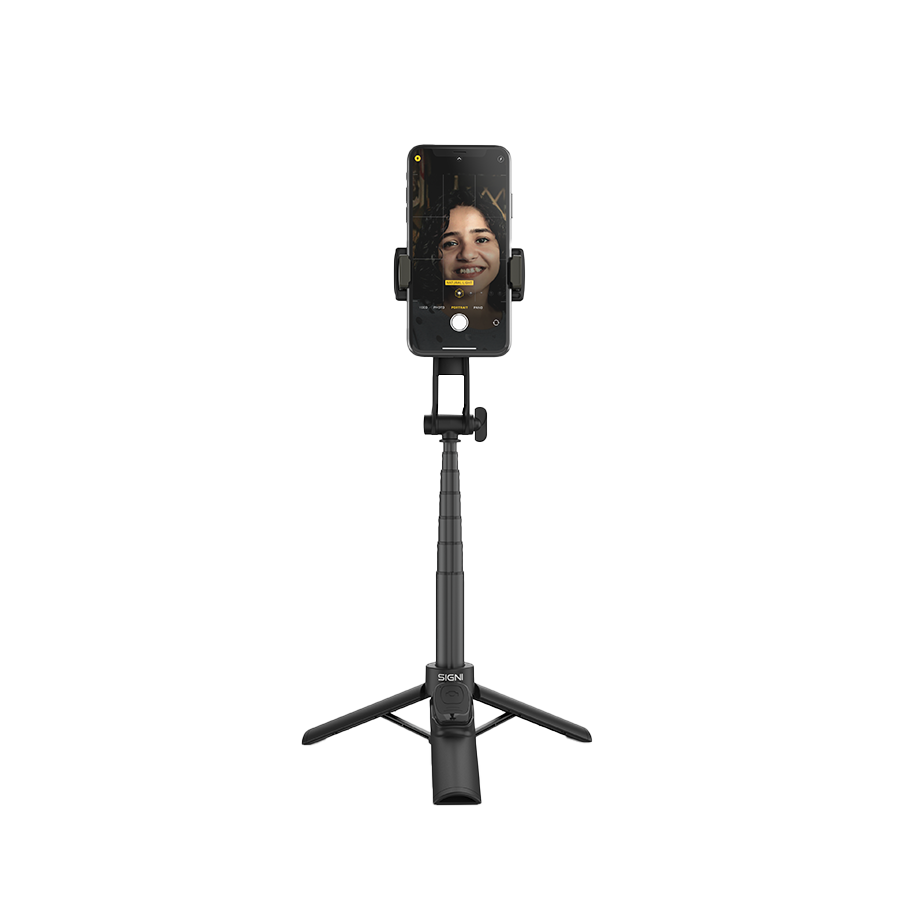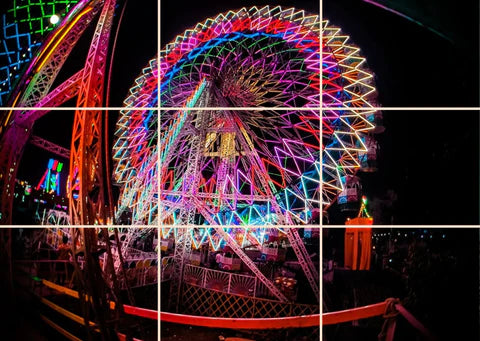MOBILE LENSES
Mobile Holders
Everyday Essentials

Mastering Composition Techniques
5 min read
Mastering composition is essential for creating visually captivating and impactful photographs. It involves arranging the elements within your frame to guide the viewer's eye and tell a compelling story. Whether you're a beginner or an experienced photographer, understanding and implementing composition techniques can take your smartphone photography to the next level. Let's delve into some key composition principles to elevate your images:
 1. Embrace the Rule of Thirds
1. Embrace the Rule of Thirds
The rule of thirds is a fundamental composition guideline that divides your frame into a 3x3 grid. Place your subject along the gridlines or at their intersections to create a balanced and visually pleasing composition. This technique adds interest and energy to your images by avoiding centering your subject.
 2. Leading Lines for Direction and Depth
2. Leading Lines for Direction and Depth
Leading lines are natural or man-made lines within your frame that lead the viewer's gaze to the main subject. They can be roads, fences, bridges, or any other prominent lines in your scene. By incorporating leading lines, you add depth and draw attention to your subject, making the composition more engaging.
 3. Use Framing to Add Context
3. Use Framing to Add Context
Framing involves using elements within your scene to create a frame around your subject. It could be an archway, tree branches, or any other object that encloses your subject. Framing not only adds context but also helps direct the viewer's attention to the main focal point.
 4. Symmetry and Balance
4. Symmetry and Balance
Symmetry creates a sense of harmony and balance in your composition. Look for scenes with natural symmetry or use reflections to achieve a symmetrical effect. However, don't shy away from asymmetry, as it can also be compelling and add a dynamic element to your photos.
 5. Fill the Frame for Impact
5. Fill the Frame for Impact
Don't be afraid to get close to your subject and fill the frame. By doing so, you eliminate distractions and draw attention to the details and emotions of your subject. This technique is particularly useful for portraits and capturing intricate textures.
 6. Rule of Odds for Visual Interest
6. Rule of Odds for Visual Interest
The rule of odds suggests that an odd number of subjects in your frame is more visually appealing than an even number. When you have multiple elements, try to include three or five instead of two or four. This creates a sense of diversity and keeps the viewer engaged.
 7. Pay Attention to Backgrounds
7. Pay Attention to Backgrounds
A cluttered or distracting background can take the focus away from your subject. Before taking a shot, check the background and ensure it complements your subject rather than competing for attention. Look for clean and uncluttered backgrounds that enhance the overall composition.
8. Create Depth with Foreground Interest
Adding elements in the foreground of your composition can create a sense of depth and dimension. It helps lead the viewer's eye from the front to the back of the image, making the scene feel more immersive.
 9. Utilize the Rule of Space
9. Utilize the Rule of Space
The rule of space is particularly important when photographing moving subjects. It suggests leaving extra space in the direction your subject is facing or moving, providing a sense of visual flow and allowing the viewer to anticipate the subject's movement.
 10. Break the Rules and Experiment
10. Break the Rules and Experiment
While learning and implementing composition principles is crucial, don't be afraid to break the rules and experiment with different approaches. Photography is an art form, and sometimes bending the rules can lead to unique and extraordinary results.
 11. Use Diagonals for Dynamic Energy
11. Use Diagonals for Dynamic Energy
Diagonal lines add a sense of movement and dynamic energy to your composition. Incorporate diagonals by positioning your subject along diagonal lines or using leading lines that form diagonal shapes.
 12. Incorporate Negative Space
12. Incorporate Negative Space
Negative space refers to the empty or unoccupied areas in your composition. Embracing negative space can create a sense of simplicity and allow your subject to stand out prominently.
 13. Golden Ratio for Harmonious Proportions
13. Golden Ratio for Harmonious Proportions
The golden ratio is a mathematical concept that creates harmonious proportions. It's another tool for achieving balanced and aesthetically pleasing compositions. You can apply the golden ratio by aligning your subject along the intersecting points of the golden spiral.
 14. Consider Vertical Composition
14. Consider Vertical Composition
Most smartphone photographers tend to shoot in a horizontal (landscape) orientation. However, certain scenes may be better suited for a vertical (portrait) composition. Experiment with both orientations to see which one complements your subject best.
 15. The Art of Simplicity
15. The Art of Simplicity
Sometimes, less is more. Embrace simplicity by focusing on a single, strong element within your frame. A simple composition can evoke powerful emotions and convey a clear message to the viewer.
 16. Capture Candid Moments
16. Capture Candid Moments
Not all compositions need to be carefully planned. Candid moments can be incredibly powerful and authentic. Be ready to capture spontaneous expressions and interactions that reveal genuine emotions.
 17. Understand Visual Weight
17. Understand Visual Weight
Certain elements in your composition carry more visual weight than others. For instance, bright and bold colors tend to attract attention more than neutral or subdued tones. Use visual weight strategically to guide the viewer's eye and create a balanced composition.
 18. Avoid Centering Your Subject
18. Avoid Centering Your Subject
Placing your subject in the center of the frame can create a static and less engaging composition. Instead, use the rule of thirds or other composition techniques to add interest and dynamism to your images.
 19. Tell a Story with Layers
19. Tell a Story with Layers
Incorporate multiple layers within your frame to tell a more complex and compelling story. Layers add depth and intrigue to your photos, encouraging viewers to explore different elements within the composition.
 20. Keep the Horizon Level
20. Keep the Horizon Level
For landscape photography, maintaining a level horizon is essential. A tilted horizon can make your photo look unintentionally off-kilter and distract from the overall composition.
 21. Review and Refine Your Composition
21. Review and Refine Your Composition
Don't settle for your first shot. After taking an image, review it on your smartphone screen to assess the composition. If needed, make adjustments and take multiple shots to refine the composition until you achieve the desired result.
 22. Consider the Rule of Simplicity
22. Consider the Rule of Simplicity
The rule of simplicity suggests that keeping your composition simple and uncluttered allows the viewer to focus on the main subject and message of the image. Avoid adding unnecessary elements that may distract from the central theme.
 23. Pay Attention to Lines and Shapes
23. Pay Attention to Lines and Shapes
Lines and shapes play a crucial role in guiding the viewer's eye and creating visual interest. Look for leading lines, curves, and geometric shapes in your environment to incorporate into your composition.
 24. Balance Colors and Tones
24. Balance Colors and Tones
Color and tone balance can greatly impact the mood and feel of your composition. Be mindful of the colors and tones present in your frame, and adjust your composition to ensure a harmonious visual experience.
 25. Practice, Practice, Practice!
25. Practice, Practice, Practice!
Composition is a skill that improves with practice and experience. Take every opportunity to experiment with different techniques, subjects, and settings. As you become more familiar with composition principles, you'll develop a unique style and vision that sets your smartphone photography apart.
Remember, mastering composition techniques is a journey, not a destination. Continuously challenge yourself and refine your skills to create breathtaking and impactful smartphone photographs. Happy shooting!

















